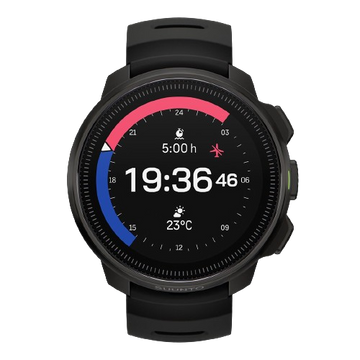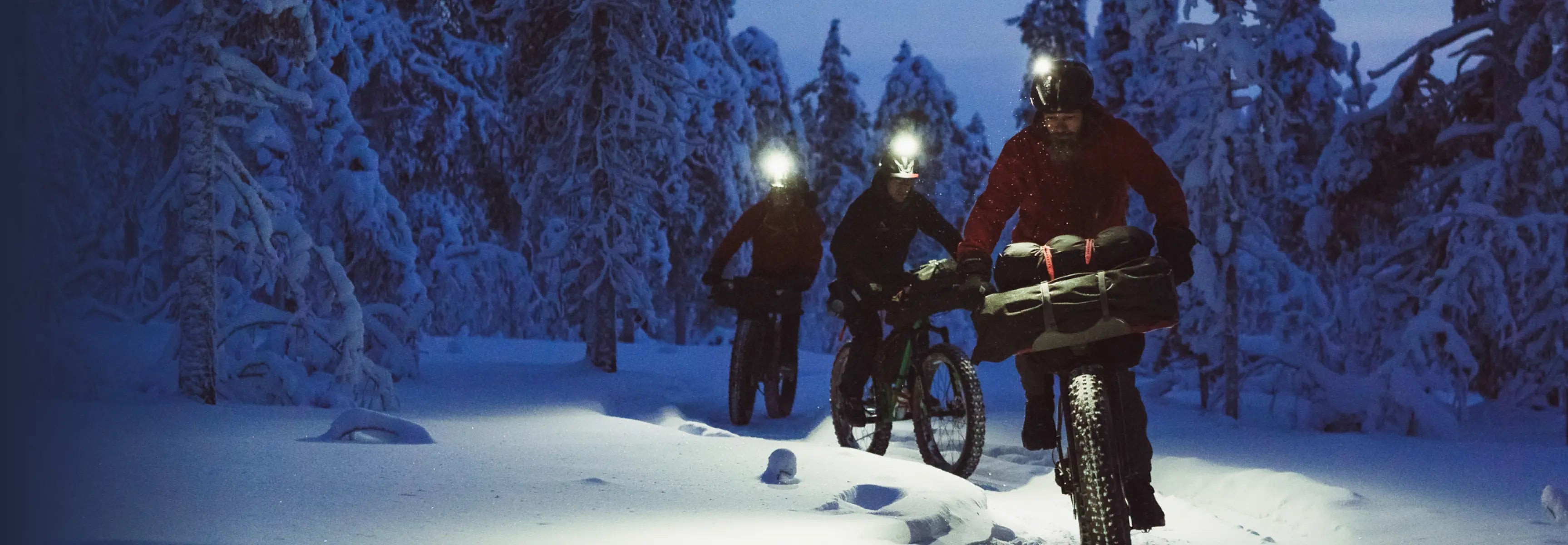
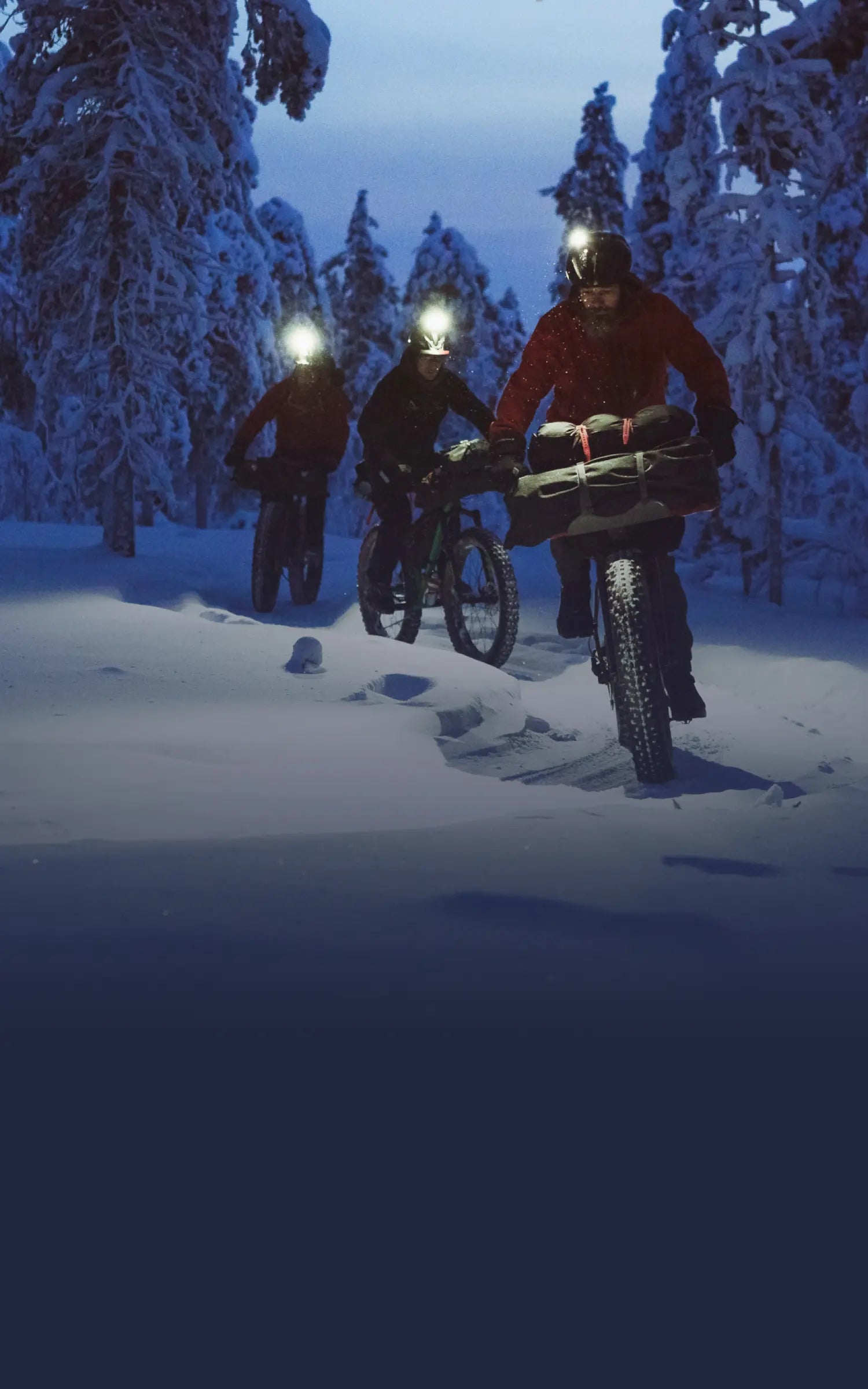
Suunto Blog
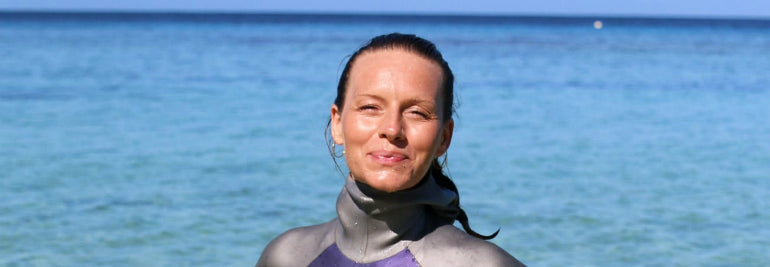
World Champion, World Record Holding, World Renowned Freediver Alenka Artnik Joins Team Suunto
In 2020 Alenka Artnik dived to 114m, deep beneath the surface of the Red Sea on a single breath, her mind and body working seamlessly together. Arriving on the surface fully aware and in control, Alenka claimed the title as the deepest female in freediving discipline CWT, Constant Weight, diving with a monofin.
Discovering the sport at a time in life when she needed inspiration and was ready for a change, Alenka was 30 and living in Slovenia when she hit the water running! Following a freediving session with friends, she quickly blew the other divers out of the water with her unearthly natural talent for apnea.
Alenka’s potential was identified early on by both her fellow divers and later her first instructor. Seizing the day, she packed her fins and moved to the vibrant diving hub of Dahab. Immersing herself in its freediving community, she found the bottom of the Blue Hole at about 100m on a breath-hold in her first season of training!
The new Suunto ambassador and freediving world champion Alenka Artnik summed up her passion for the sport with these words:
“We come from the sea and so it feels natural... It isn't just physical, it is mental, spiritual, and mind-blowing. I use the tool of freediving to explore my spirituality and carry it through into each part of my life.”
Eat, sleep, break dive record, repeat!
In 2016 Alenka celebrated her first World Record at the CMAS World Championships diving to 92m CWT wearing bi fins. The following year the record-breaking freediver won gold again at the same championships and graduated to the 100m club (CWT) at the Caribbean Cup, making her only the fourth female freediver to be crowned in the club.
Alenka, like so many other freedivers, has always dived with Suunto. Her Suunto D4i Novo was her first freediving computer, and now she dives with a Suunto D6i Novo, but soon she will be going deep with the D5. It is fair to say Suunto dive computers have always been at the centre of Alenka's training.
World Champion Alenka explained that she currently uses multiple Suunto devices when diving, "At the moment I'm using my two Suunto D6i Novo devices. One is for notifications of my depth that I wear on my neck weight close to my ear and the other I wear on my wrist so I can check my dives during training." She went on to say that analysing her dives afterwards is a key part of her dynamic training schedule and Suunto’s high performance in this area is one of the many reasons she chooses Suunto every dive, “I record all my dives in my training logbook with the help of the MEM Logbook function. I always rely on the logbook function of my Suunto dive computers to study my dives.”
Finding her flow
In recent years Alenk has continued to win competitions and break records but her focus has shifted from “winning” to a quest to optimize her performance, she summed it by saying “getting better motivates me.” The gains from this new approach are evident in her calm and collected surface protocols, something she attributes to entering the flow state, the world champion describes what she means by this:
“In the end, I think that it is all about the flow state. You put yourself in a mental state of flow. It is the peak performance, the maximum performance- but effortlessly.” summarises Alenka "For me, it is about how to do the best performance with the least effort possible. More with the mind and less with the physical effort. Good awareness, being super present the whole dive and less with the physical effort.”
100% commitment
Ten years on since Alenka discovered freediving, as she approaches 40 and with future hopes of freediving being billed at the Olympics, she is continuing with her hard push to dominate the depths with ease. Alenka is also part of a growing number of athletes in this discipline that are trying to demystify the sport, increase its popularity and ultimately help save our oceans.
“Freediving promotes a healthy lifestyle, but best of all more freedivers promotes more Ocean Ambassadors to protect our water planet.” Alenka Artnik
All images from Alenka Artnik ©
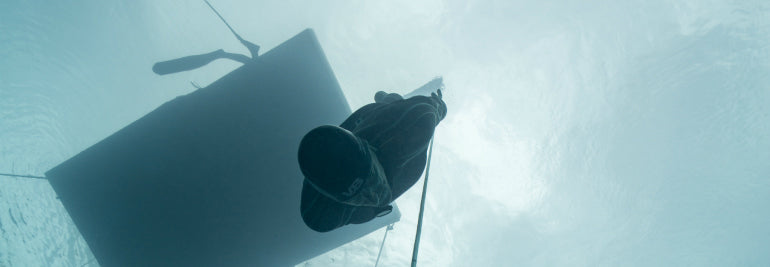
William Trubridge reaches for another world record in freediving
William takes the 126m depth tag on his world record attempt dive. © Johnathan Sunnex
COVID-19 kept Suunto ambassador William Trubridge isolated on Long Island in the Bahamas since March 2020 allowing him to focus exclusively on training with few distractions. After several months he started to see the benefits and his performances in many areas were the best of his career so far.
Although he is disappointed he didn't achieve a new world record, William is undeterred in his drive to continuing pushing and exploring the ultimate human limits for freediving.
Willam, what was the goal for this event?
My goal was to try and break the world record in Free Immersion, FIM (in which the athlete pulls on the rope to descend and ascend), currently at 125 m world record set in 2018 by Alexey Molchanov. I held the 124 m world record in FIM previously since 2011, but I thought it was about time I got it back!
Why now?
I came to the Bahamas in March and somewhat fortuitously have been trapped here safe in the remoteness of the island ever since, and happily, my family was able to join me in the summer from Japan.
COVID has been tough for everyone but it has meant that I have been able to focus on my training maybe more than I would have normally, having not had any courses or competitions scheduled. This has facilitated the best kind of training with no competitions looming, I've been able to maintain focus on the goal. I really felt like I was in the right place to attempt the record.
It's been four years since your last attempt, why the long pause?
Firstly, I think it is becoming more and more difficult to break world records. As with any sport, it’s not something that can continue indefinitely. There is always going to be a plateauing effect as we approach the human limits, wherever they are, and this is happening now in freediving as it has in other sports. In recent years there hasn't been much of an increase in FIM depths, and any of the disciplines of freediving as there were prior.
Also, in the last four years, I have been involved in a lot of other projects, and starting a family has been the biggest. That has involved not just a shift in day-to-day life and rhythms, but your whole perspective, and it is one of the most difficult things we go through but I have learned to take it in my stride. Now I am settled into family life, my training has been going well and my performances are the best they have ever been. I am ready to get back into it.
William ascending on the line. © Johnathan Sunnex
How are you feeling training wise?
I have done many of the deepest dives I have ever done in this discipline in recent months and also in other parameters of base training to do with breath-hold times, static apnea, and exhale static apnea (breath-hold with empty lungs) reaching the longest times I've ever done in these difficult exercises.
In terms of breath-hold and depth adaptation, I am in the best condition of my life. A world record attempt is a whole other monster so although all the signs are good, you have to deal with the mental game and the weather conditions, for which relaxing in the water with a thin wetsuit can sometimes be problematic.
What's changed in your training since your last world record?
Quite a lot has changed in my training since the last record. I am always in a constant state of development and evolution as I research and experiment with myself. I have focused on my weaker links, which are mainly breath-hold, but if any of the factors slip then you won't be able to dive deep.
Is technology or science helping with the evolution of the sport?
There is always a benefit from an increased understanding of the physiology and science of the sport.
Especially in my 17-year career, there have been huge changes. When I first started training I was feeling around in the dark a bit but now I have a more definitive, but not a complete idea. I'm sure that in the next ten years athletes will be far better equipped with an understanding of what's happening in their bodies and how to maximize that in their training. What happens in your body when freediving and what you require mentally and physically is unlike any other sport. From the dive reflex, the compression, the heart slowing, to the high acidic and lactic loads we are still discovering more efficient ways to train to maximize performance in those parameters.
Has your outlook or mindset changed in any way?
Yes, it has changed. Becoming a father has been the biggest shift. It changes your attitude toward risk, and your risk tolerance decreases. In freediving though, it has not changed so much, but in other areas like driving, and driving scooters in Indonesia in particular, it has definitely changed!
A lot of my training has been about identifying risks and accommodating them with enhanced safety mechanisms.
The turning point 126m down, with 126m more to reach the surface! Johnathan Sunnex ©
You turned 40 this year (congrats!); how does getting older affect you in this sport? And is there more risk?
It is hard to say what the effects of age on the sport are. We've seen athletes perform well into their 50s and 60s. Natalia Molcahov, before her untimely disappearance, was smashing women's world records in her 50s. It's definitely a sport where we benefit from the maturity of age and the slowing of the metabolism, but the risk lies in susceptibilities we are not aware of that increase with age, that I have been working on identifying. We need to be aware of this and prevent risks before they occur if possible.
How has the pandemic helped or hindered your preparation?
The pandemic has had a huge effect, mostly negative but some positive. I've been able to focus on training but mostly it has just been me and one other person here. However, now the record attempt team has increased and it is nice to connect and have more of a support group for training.
The biggest impact has been the uncertainty. As an athlete, with sports like freediving, you are aware of the fact that it is an expendable job, not as important socially as a Doctor and a teacher. More of a luxury in society as the arts, the sports, they are the first to go in a major fallout or crash.
Now having a family has been the main impact on me but luckily I have been able to train consistently through this period with the hope to capitalize on that.
What drives you to continue with this? Surely, you've found the human limits for apnea now?
No, we have not found the human limits, we never will. it is just a matter of stretching out the grey area of possibility and finding an approximation. We know we can go at least one or two more meters, maybe ten, twenty, who knows! It becomes more and more improbable and our job as athletes is to stretch into that zone and redefine human limits as much as we can.
How was the world record attempt dive?
Ah, 2020. Did anyone other than Jeff Bezos escape its infamy? I was hoping to end the year on a good note, by attempting a world record in Free Immersion. In training, I logged a dive to 126 m that was not just a personal best and one meter deeper than the current world record, but also one of the strongest and most enjoyable dives in this discipline of my career. Based on the strength of this dive, I announced a world record attempt for December 2020.
Then disaster hit.
The worst incident of my life. A deep underwater blackout in training was caused not by low oxygen but most likely by toxic levels of carbon dioxide. It was something that has to date been a hidden risk, lurking latent in the deepest depths of competitive freediving. I was under the water for almost 7 minutes and revived by the impeccable action of my safety team as well as a lot of luck.
William surrounded by safety divers, who in training revived him after disaster hit while deep underwater. © Johnathan Sunnex
What made you try again?
Afterward, I wasn’t even thinking about a world record. I took two weeks off and enjoyed being a father to my 20-month-old daughter. But when I tentatively returned to breath-hold and the water I found miraculously that my form had remained, or even improved. Mentally there didn’t seem to be any scars either. After consulting with my team and doctor I decided to press on with the attempts.
I built back through the depths again to the point where I was diving close to the record depth. Then 2020 threw me some more challenges: bad weather, a problem with my ear and jaw, a commercial shoot with dates that had to change and overlap with the record attempts… I was still diving strong, but not with the consistency I need in the build-up for an attempt.
When the window came for attempting the record I spent the first few days finding my feet again with dives to 118 m and 121 m. Then I decided to attempt the record on the 11th December 2020.
After such impressive results in training, what happened on your world record first attempt?
The day arrived, and so had a cold front, with low grey skies and temperatures plummeting. The wetsuit I’d been training in wasn’t enough, and after testing the waters I called the dive off, knowing that shivering would cause me to waste precious oxygen before the dive even began.
The next day was perfect. The sun makes all the difference when we’re lying stretched out on the surface of the water preparing in the final minutes before a dive. It was the right day for a record attempt, and I felt good, perhaps too good.
My time was slower, more relaxed on the way up, and this slight adjustment might have affected my efficiency negatively.
After retrieving the tag from 126 m and returning to the surface, I took two breaths then fell back momentarily in a brief surface blackout. It ended as quickly as it had begun, but the damage was done and the dive was disqualified.
How did this affect your mindset for the next attempt?
I needed to take a day off after the blackout, which meant I was left with one last day, the 14th. The cold had returned just a little, and this combined with some minor mistakes in the descent snowballed into an increasingly negative mental and physical state, until soon after the turn I felt like the dive was almost certain to end badly.
I tugged sharply three times on the rope to signal my surface crew, who released the counter ballast, pulling the rope up and giving me a free ride back to the surface.
Being pulled quickly upwards, as the weight of the water column slipped off my shoulders it was replaced by the weight of disappointment, and the knowledge that there would be no silver lining to end this year with.
What drives you to achieve deeper depths in this sport?
Regardless of the result, I have to credit my amazing support team who were faultless in running these attempts. Alex Llinas, Kevin James, and Richard McKenzie were my safety divers, Jani Valdivia was medic, Jonathan Sunnex and Michelle Lynn were taking video, Riccardo Paris was managing the platform equipment, and Chris McCay and Olga Sidorova were the AIDA judges for the attempt.
My 24/7 support team has been my incredible family, who have kept me fed, nourished, and motivated in every way. Thank you to my partner Sachiko, our beautiful daughter Mila, my mother-in-law Lily, who has put up with so many months here in the Bahamas, and to my parents and brother who have cheered me from New Zealand.
Of course, I couldn’t have even had the privilege of attempting this without the support of my sponsors, Suunto and Orca, who have been loyal to me through both the highs and lows.
What's next, William?
The hunger for training and plumbing new depths of the oceans and human aquatic potential has not weakened at all, and the day after the attempts finished I found myself drawn back to the Blue Hole for an easy training session.
Of those enticing depths, I will never tire.
All images were taken by Johnathan Sunnex ©
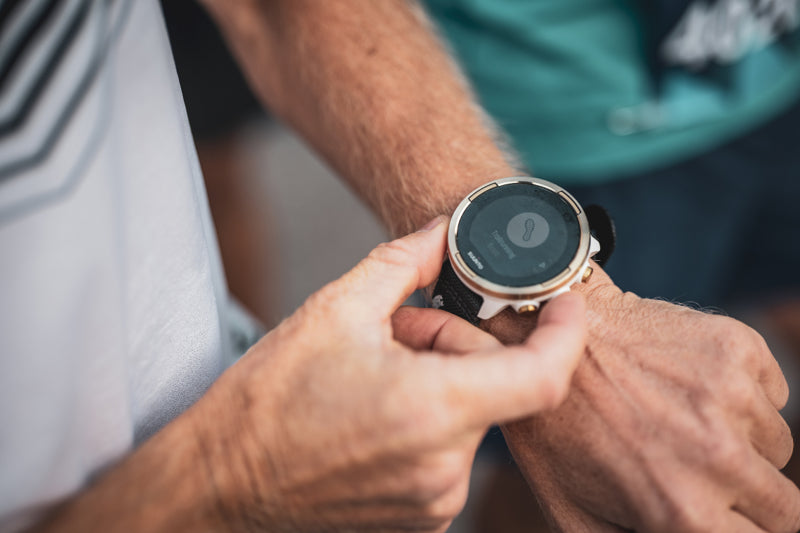
Data crunch: sports in 2020
South African ultra runner Ryan Sandes was right on the money when asked about races being cancelled in 2020: “Sure, it’s a little disappointing,” he said. “But at the end of the day it’s just a race. I’ve still got my health, I’ve still got my family. When you look at it more holistically like that it gives you peace of mind and you become a better athlete, a better human, you’re more relaxed. For running ultras you need this, you need to be calm and in a good headspace.”
Whatever your sport, having a positive, calm headspace is optimal. It hasn’t always been easy maintaining that this year. But the reverse is also true; training, pursuing the sports we love, helped to keep us on an even keel. Each reinforces the other.
The data we’ve collected and crunched from 2020 user activity shows staying active, finding ways to train, and even taking the opportunity to rest more, have been key in helping us ride out this crazy year. We’ve found ways to keep ourselves pumped. Let us walk you through the data.
Spain on top
The first wave of COVID-19 hit Spain hard. The lockdowns were strict, sudden and shocking. But that didn’t stop Spaniards from continuing to train and find ways to challenge themselves. Our data shows Suunto’s users in Spain clocked the highest total minutes per user, averaging 5,965 minutes on average.
Spanish Suunto athlete Joaquin Perez also looked out for community initiatives to help his community cope. Back in April he told us: “A good source of inspiration and motivation for the community are the multiple solidarity initiatives that exist, for example in Spain last Saturday there was an initiative to raise funds for COVID-19 research where more than 7,300 athletes ran in their homes and raised almost €83,000,” he says.
Click to read more about how Suunto athletes adapted to life in lockdown.
Go France!
Respect to Suunto users in France for having the highest total ascent numbers! They also had the highest total meters for all workouts combined in both running and cycling.
And, just like in 2019, the French had the highest "adventure running ratio": our French community ran 15 times more on the trails than on the treadmill!
We stayed upbeat
Even with tough times the average mood our users selected after each workout was "very good". This is slightly higher than the year before in spring 2019. By the time autumn arrived in the northern hemisphere it was about the same as 2019.
Check out our article about making your best workout playlist ever, and give your mood a boost on your next workout!
The most active countries were …
Take your hats off to Finland, South Africa, Sweden, Russian and Poland for having the most active Suunto users. It’s interesting South Africa is the only country in the southern hemisphere to make the list. It also went into lockdown early.
These places caught more Zs
Finland, New Zealand, Netherlands, Estonia, Belgium came out on tops for getting the most sleep. Respect to Finland for having the most active users and also the users that got the most sleep. The Finns were also the only ones sleeping more than seven hours a night on average. Impressive!
Learn how sleep can make you a better athlete!
You sport freaks mix it up
In 2020, the average number of different activity types per user was 4,2. This means an average Suunto user enjoys more than four different sports, with running the most popular.
On average, our users tracked 66.5 total workouts of any given type during 2020.
Click for 12 ways to change up your training over winter
Walking booms
When things get tough, conventional wisdom says to take a nice, long walk. Somehow Suunto users must have got the memo because there was a massive 70% increase in that activity among our users. What does this tell us? It could be that because so many of us were doing home office we found more time to take walks. Maybe with family at home, too, we took more walks together. Whatever the reasons, it can only be a good thing.
Read our articles on walking:
How to walk your way to good health
How to improve your walking technique
How to walk mindfully and its benefits
Other increases
Hiking amongst our users also had a big increase, by 37%. Mountain biking increased by nearly 20%. Unsurprisingly, there was a big increase in indoor cycling.
Swimming drops off
With pools closed, swimming dropped off with our users. Even with vaccinations available, this trend will probably continue into 2021. Our solution? We recommend you triathletes and swimmers pivot to open and cold water swimming. Read our articles on how to do them safely.
10 reasons to enjoy open water swimming with Suunto
What you need to know about cold water swimming
Diving booms!
Put your fins together for the divers! Landlocked lockdowns didn’t stop our community of explorers from venturing underwater with an average of 15.5 m depth for divers and 6 m for freedivers.
In a year of backyard adventures when divers explored what treasures their local sites have to offer, August was the busiest month on record.
Lead image: © Philipp Reiter
Read more articles
10 must-read Suunto articles from 2020
7 tips for running in the rain
14 tips for backcountry skiing this winter

5 steps to therapeutic breathing to combat COVID-19
Suunto ambassador William Trubridge knows a thing or two about deep breathing. In 2016, he set a new world record by diving to 102 m on one breath. In 2019, he became the first man to complete an 'underwater crossing' of one of the world’s major channels, swimming across the wild Cook Strait as a series of 934 breath hold dives.
William has recently taken another deep dive, this time into the medical world and its treatment of COVID-19. Concerned about the impacts of the virus, he researched how it attacks the body and the medically accepted treatments that help people recover from it. In the process, he learned therapeutic breathing can play a valuable role. Read on for his in-depth report!
Scroll down to see William demonstrate a deep breathing exercise!
Therapeutic breathing for COVID-19
By William Trubridge
SARS-CoV-2 is a virus that targets the respiratory system. It attacks our ability to breathe. Now it’s emerging that a strategy to combat this infection may be through breathing itself.
First, I need to state clearly I am neither an epidemiologist nor pulmonologist. Everything I describe in this article has been recommended by experts (who I will reference) in one or both of these fields, and I will not speak or extrapolate beyond their recommendations. My career in freediving has meant that I have spent almost two decades harnessing the power of breathing, and I hope to use this experience to help describe and demonstrate how to achieve the recommendations of the experts.For example, the instruction to ‘breathe deeply’ is like telling someone to ‘swim smoothly’– there is a lot of technique inherent in the action. A ‘deep breath’ could have vastly different results depending on whether you start at the base of the lungs, sucking air into the belly, or if instead you simply lift the shoulders and ‘gasp’ the air in. These are the distinctions where I hope to add value.
When JK Rowling contracted Covid-19 in April, she employed a technique described by physician Sarfaraz Munshi from Queen Hospital UK that is aimed at maintaining lung function and preventing secondary pneumonia during the illness.1 The Youtube video of his description is here, and the sequence he advises can be summarised as follows:
1. Sit with a straight spine and feet flat on the floor (I add this instruction, since deep breathing while standing risks fainting).2. Breathe in deeply, hold for 5 seconds and exhale – repeat 5 times.3. Breathe in and do a big cough from the base of the lungs (covering your mouth) 4. Repeat Steps 2 & 3.5. Lie flat on your front with a pillow in front of you, taking fairly deep breaths for 10 minutes.
This sequence is taught by respiratory physiotherapists also, where it sometimes goes by the name of ‘Active Cycle of Breathing Technique.’ It is important to remember it's a therapeutic treatment, not preventative: there is no reason to expect that it will help to protect against infection with the virus in the first place.
The deep breaths help to ventilate alveoli and remove debris that has accumulated on the walls of the alveoli due to damage from the virus. This debris is what blocks oxygen from being absorbed into the blood, which can lead to a condition called ARDS. Lying on your stomach benefits aperture of the smaller airways: since these are distributed closer to your spine if you are lying on your back the weight of your torso will impede them from opening fully.
Here is where I will add some extra directions/descriptions to ensure the exercise is as efficient and targeted as possible.
STEP 0 - Motivation
Many reports from Covid patients describe how it completely cripples energy levels. Even sitting up can be an ordeal, and the idea of committing to an exercise like this might require more motivation than what is in the tank. If that’s the case, then don’t commit to it to begin with. Just tell yourself you’re going to change position (which is recommended by pulmonologists to help prevent pneumonia) and come into a seated position. Once you’re there, the idea of one full breath might be feasible. Then see if you can complete just one round of steps 2 & 3. If that’s your limit go straight to Step 5, otherwise stick with it for another round. This way we only commit to doing something easy, that we know we can manage.
STEP 1 - SITTING
Support behind the spine is fine, as long as the spine is kept straight. What you want to avoid is being hunched, as you would be if you’re sitting up in bed leaning back against the headboard, or seated in a soft couch. Instead, try sitting in a chair or on the edge of the bed, with your feet on the ground in both cases. This allows you to access the full range of movement of your breathing muscles, and gives your torso space for your lungs to fully inflate.
STEP 2 - DEEP BREATHS
This is the key part of the exercise. The aim is to maximally inflate the alveoli (air sacs in your lungs, similar to how a sponge has tiny air chambers). In order to do this, we need to ensure that we are ventilating the entire volume of the lungs. Most of that volume is in the base of the lungs (they’re shaped like pyramids), and we actually have to think about breathing ‘into our belly’ in order to inflate this part. This activates the diaphragm muscle: a plate-like muscle that sits flat in your torso and separates the lungs and heart above from the digestive organs below. It works like a plunger, so that when it contracts and moves downwards then it pulls air into the lungs above it. The effect is also to push the stomach down and out, so it looks like the belly itself is inflating.
This ‘diaphragmatic’ breath is the most efficient way of breathing, and it is how you should start the deep breaths. Visualise the air being sucked deep into the base of your torso. If you have one hand on your stomach and the other on your chest then your lower hand should move outwards as the stomach ‘inflates’, while the upper hand stays still during this phase.
During the second phase you will breathe into the chest. This uses the intercostal muscles to expand the ribcage, and is how we breathe when we ‘gasp’. You will feel outwards movement in your upper hand, and also expansion as the ribs separate away from each other. It is important in this, and all phases of deep breathing, to stop if you ever experience sharp pain. It’s also important to try and maintain relaxation in all muscles that aren’t involved in the breath - check that your head, neck, arms and hands are all completely relaxed. Contraction there can inhibit your ability to breathe deeply.
In the final phase of the inhale you will breathe into the upper ‘clavicular’ zone of the chest. Raise the shoulders and chin slightly and continue inhaling until you reach your limit. This phase has a lot less airflow than the previous two phases, and can be removed from the sequence if you’re already experiencing any discomfort or pain.
So Step 2 is actually:
2.1 Breathe powerfully into the belly, using the diaphragm2.2 Breathe into the torso by expanding the ribcage2.3 Elevate the shoulders to allow your breath to fill the upper part of the torso
Again, stop at any point if you experience sharp pain or dizziness.Also, breathe through the nose to avoid irritating a dry cough, as the nose warms and moistens the air you take in.
Watch William demonstrate here and try to follow along.
STEP 3 - INHALE AND COUGH
The deep inhale should be the same as those in step 2. When you cough, in order to activate the base of the lungs, focus on squeezing your abdominal wall as you cough - this will make it more powerful and explosive, which should help to expel debris accumulating inside the lungs.
STEP 4 - REPEAT
Again, only if you feel comfortable. Also, give yourself a break between the two cycles. During the break you can relax and breathe normally (shallow).
STEP 5 - LIE FLAT 10 MINS
While lying on your front, the breathing doesn’t need to be as deep as it is in Step 2. You might want to concentrate on just the first phase of the breath - the diaphragmatic inhale - in order to ensure the air arrives at the base of the lungs. If you’re breathing in this way you should feel your belly swell underneath you, pushing down against the floor.
There is no recommendation on exactly how many times to repeat this exercise in a day, but there should not be any disadvantage to performing it several times or as much as you are comfortable with.
Also, even if you are reading this and not sick, it may be a wise move to perform it once just in case, so that your body has a kind of ‘benchmark’ for how it should feel when you’re well. That way, if the worst comes to the worst and you do contract the virus then you won’t have to learn the technique while sick, and you will be able to get an idea of the condition of your lungs from how it compares to when you were well.
As always with any infection, keep hydrated, monitor your symptoms and report them to a doctor – don’t try to self-manage with these breathing exercises alone.
Lead images:
Photo by Fusion Medical Animation on Unsplash
© Alex St Jean
References
https://www.huffpost.com/entry/deep-breathing-coronavirus-patients-symptoms_l_5ea1e2f0c5b6d13e4f73c856 2. lung pathologist Sanjay Mukhopadhyay: https://www.youtube.com/watch?v=vPtH42Lnt_Y3. Ema Swingwood, chair of the Association of Chartered Physiotherapists in Respiratory Care: https://www.newscientist.com/article/2241191-can-breathing-exercises-really-help-protect-you-from-covid-19/#ixzz6Linrrk4H
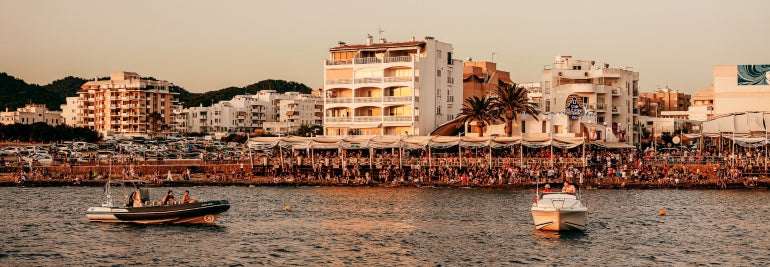
Meet the Mambo Brothers, two health conscious DJs living the nightlife
They travel the world playing at festivals and parties that go until the sun rises. They return home to Ibiza and party some more at their own venues, including the famous Café Mambo Ibiza. But don’t be fooled, Mambo Brothers Christian and Alan Anadon prize health and fitness as much as an epic night out partying.
They have been living and breathing electronic music since they were kids. EDM aristocrats, their parents were founders of the legendary Café Mambo Ibiza where some of the world’s biggest name DJs have come to play. Only boys, they watched and learned, fell in love with music and the ability of DJs to send a crowd wild.
Now they run the cafe, play at events across the globe, and produce their own music. In a new partnership with Suunto, the Mambo Brothers put together three playlists for Suunto users to enjoy on their next workout. The first playlist is ideal for recovery and chilling. The second playlist offers more get up and go. And the third playlist consists of tracks suited to an intense workout. We caught up with two brothers and asked them about sports, fitness and the DJ lifestyle – read on below.
With a view like that we can see why Christian likes to work out at home. © Mambo Brothers
Play your own favorite tunes from your wrist
With the Suunto 7 smartwatch you can connect your headphones to your phone and control music and other audio – adjust volume, pause and skip tracks – straight from your wrist without taking your phone out of your pocket.
You can also listen to music without your phone: Spotify has just released an update to their Wear OS app that enables offline use. Simply connect your bluetooth headphones with your watch and download the tracks that you want to take with you!
With this new feature, Spotify Premium users will be able to download their favorite albums, playlists, and podcasts to listen offline. Free users will be able to stream their tunes in Shuffle Mode using a WiFi or cellular connection, as well as download any of their favorite podcasts directly to the watch.
LEARN HOW TO USE SPOTIFY WITH YOUR SUUNTO 7
Running, the gym, hiking, dancing all night – what’s your sport?
As kids, we really enjoyed playing basketball on the weekends, but all that kind of thing got lost when we discovered the world’s best night clubs on Ibiza! Nowadays, we mostly go to the gym and work out there. We do 30 to 45 min runs on the treadmill and keep our heart rate over 140 to burn all that excess good life we have! Then we do compound exercises like deadlifts, squats with dumbbells, lumberjacks etc. Doing this helps us burn fat much faster.
Any outdoor adventure sports?
Sometimes we enjoy a good hike somewhere on the island, or while we are on tour we find a good track to walk. We also do a lot of deep sea diving. We love diving as it’s a gentle sport, and you have to be concentrated on your breathing and what you see in the water so it’s a very relaxing and a kind of therapy for us. It helps us to chill out.
Being a DJ is a nocturnal life right? How do you stay balanced and in shape?
For us it’s really difficult to find a routine because it’s so easily broken with all the travelling, playing at festivals, nightclubs, working at our venues in Ibiza. We have tried working with a personal trainer, which works very well during winter months, but when the night clubs in Ibiza open, and the summer tours start again, it’s a drastic change for us. We difficult to keep appointments because we never know what time we are going to call it a night. So this makes maintaining a routine difficult. It’s important for us to do some form of sport every day to get the positive vibes that exercise brings!
Alan overlooks Ibiza, an island famous for its electronic music. © Mambo Brothers
Has the DJ scene got healthier these days or is it still pretty wild?
It has got healthier for sure, and DJs are more conscious about wellbeing and feeling good in general. We are all very happy about that, but we are still playing with fire every night and try not to cross the line and break routines and good habits. For us, it’s very important to maintain good habits like training most days, plus sometimes adding a hike, a swim in the ocean, and eating healthy food! Keeping a balance and feeling fit is essential to handle our busy schedule.
What do you love about producing music and DJing at dance parties?
We love being DJs because it’s very social and we love making friends around the world that eventually visit us at Cafe Mambo during the summer. It makes us very happy being able to return their hospitality and have a few shots of good tequila with them! We have an amazing job; you get to travel, meet people, eat at great restaurants and of course dance! Producing our music is great – we get a buzz when a studio session goes well and we get a good track that you can play at a gig and see the crowd’s reaction. You can see how the track works and whether we are getting it right or if it needs some changes next time we’re in the studio! We feel blessed to be able to travel the world doing what we love most!
Tell me about your playlists and why you chose these tracks?
All the music has been tested on the treadmill and it works! We have never ran so much and enjoyed it so much! We have made a selection of classics, music that we love, and records that really motivate us! We hope you like it and enjoy as much as we do!
Lead image: Photo by Sebastian Coman Travel on Unsplash
Read more articles
The benefits of training to music and making your best playlist
4 indoor training tips for endurance athletes
How to adapt your training when the unexpected strikes
7 indoor training exercises to stay in shape
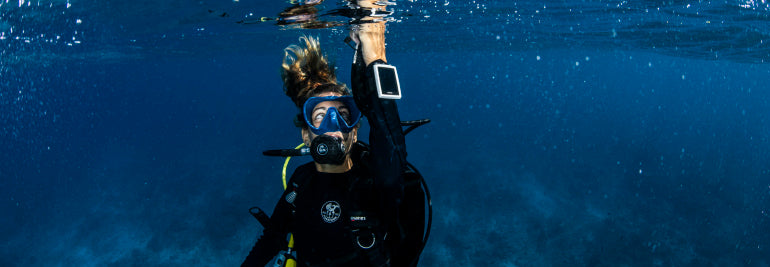
Dive Doctor's Orders
Spring into action slowly but surely after a longer break between dives. Photo by Alex Kydd.
Partial as I am to pies, chips, peas and as many garishly colored fatty sauces as I can cram in, there comes a time when the wetsuit constricts the internal organs so much that radical action is called for. With the new diving season nearly upon us, it’s an opportune moment to review the best ways to trim down and ease those rusty diving muscles back into action.
Ease those rusty diving muscles back into action. Photo by Alex Kydd.
Improve fitness
Get in shape with some cardiovascular exercise, eg. running, swimming or cycling (as well as getting the ticker pumping, this will help develop flexibility, tone and strength in the core muscles of the back, abdomen and legs).
Stay hydrated
Keep those fluids up, particularly if you’ve had alcohol in the 24 hours before diving. It takes a few days to really get hydrated so stay on top of your water intake.
Easy start
Short, shallow, and in calm conditions are the only way to get back into the water after a pause. Diving is more fun when it is safer, and careful preparation, visualizations and warm up dives are good practice.
Stop smoking
No other action will have a more positive effect on your gas consumption, bottom times and overall health.
Lose weight
A lighter, more hydrodynamic physique will benefit you before, during and after dives.
Service kit
Regulators and demand valves in particular. Ensure your BCD/dry suit is working properly, your computer has sufficient battery power and the rest of your kit is in good condition – preferably before you get to the dive site!
Test dives
Try out any new equipment in a pool/sheltered area to get used to it. This goes for recently serviced kit too, have a few dives and be sure you are ready togo diving.
|mportant O2
Ensure you have access to oxygen in case of emergency, and make sure you have enough to last. Everyone should know where the oxygen is stowed whilst you are diving, if you aren’t sure then make it your business to find out.
Be prepared
Keep the details of your nearest chamber/helpline to hand, and if in any doubt, call them earlier rather than later,
Photo by Alex Kydd.
And remember, some basic but often overlooked ways of minimizing your inert gas burden and decompression stress:
Plan the Dive, Dive the Plan
Stay well within your planned dive parameters – your computer has an algorithm but has no idea of how tired/unfit/hungover you are, so don’t push its limits
Slowly does it
Keep your ascent rate controlled – watch your buoyancy, particularly in the shallow part of the water column.
Safety chill
Incorporate safety stops and pad them out if you have spare gas to do so, especially when you’ve been diving deep, strenuously, or in cold water. Imagine all the wonderful encounters you may experience if you hangout out a little bit longer underwater.
Post dive chill
Avoid doing any hard exercise for several hours after the dive (this includes lugging all your kit up hill) – bubbles are liberated from off-gassing tissues for some time after you’ve surfaced, and the less they are agitated the better.
Multi day chill
If you’re diving on multiple occasions over several consecutive days, try to insert a dive-free day every 2-3 days to allow your tissues to desaturate completely.
Stay down
Don’t go to altitude sooner than is recommended – generally 24 hours from completing your last dive.
Photo by Alex Kydd.
It’s worth emphasizing that in spite of doing everything correctly, and following all the established preventative strategies outlined above, divers still get bent for no apparent reason. There’s no justice in this world, and life is inherently unfair.
So make the call, ask for advice, alert someone, even if you feel you can’t possibly have DCI - any symptom that wasn’t present before the dive should be assumed to be DCI until proven otherwise.
About Dr Oli
Dr Oli, Hyperdive.co.uk, much like the surface of our blue dot planet Earth, is approximately 60-70% water. He constantly strives to put much of the other 30-40% to good use in the field of diving medicine.
Serving as the Medical Director and Senior Hyperbaric Physician at London Diving Chamber, UK for 13 years, this post at one of the busiest hyperbaric chambers in the UK has given him extensive experience in the assessment and management of all types of diving accidents and emergencies. In addition he has gained a thorough knowledge of the practice of hyperbaric medicine, for non-diving conditions.







































